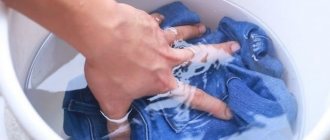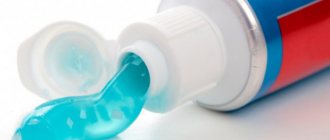Removing fresh foam
As soon as foam gets on your skin, you should immediately remove it with a damp cloth or cloth. Do not rub the stain on the skin, so as not to aggravate the situation.
You can clean fresh foam sealant using traditional methods, for example, salt, dimexide, gasoline, sunflower oil. Start with the options that are most gentle on the epithelium.
Vegetable oil
The method will not harm the skin, but to be effective you will have to stock up on time and patience.
- Heat the oil slightly and soak a cotton pad in it.
- Place it on the contaminated area and leave for half an hour.
- Wash your hands thoroughly with soap.
Attention! The oil for the procedure should be warm, but not hot, so as not to get burned.
Salt
If the contamination is minor, you can use coarse table salt for cleaning. Rub your hands thoroughly with salt and then rinse with water.
We recommend reading: The drum in the washing machine has stopped spinning. Causes of failure.
Nail polish remover, kerosene, gasoline, acetone
These products will only bring results if the construction foam on the skin has not had time to dry completely. Soak a cloth in the liquid and wipe off the dirt. At the end of the procedure, be sure to wash your hands and lubricate with nourishing cream.
If nail polish remover is not available, use acetone. You can also remove foam from the skin with kerosene or gasoline; they are used in a similar way.
Dimexide
Before scrubbing the foam with dimexide, you should assess the extent of the contamination. If large areas are stained, it is better to choose another method, since the medicine, being absorbed into the body through the pores, can cause a side effect due to an overdose.
Is it possible to remove polyurethane foam with alkali and acid?
Aggressive chemicals actively attack the composition of the sealant, destroying it. But they can cause serious skin burns; under no circumstances should they be used to cleanse hands.
The only safe option is a steam bath with soda, which is known to be alkaline. Add a couple of tablespoons of soda to hot water and hold your hands over the container for half an hour. After this procedure, the softened sealant can be easily washed off.
Removing fresh foam
It is better to use special solvents that can be easily purchased. But usually such a remedy is not at hand. What to do?
Methods for immediate cleansing:
- Flakes of the substance must be carefully removed with a dry cloth. But just don’t smear it over the surface, but roll it towards the center.
- The remaining stains are treated with a cloth soaked in acetone or nail polish remover.
- In the absence of even these products, vegetable oil is used, which will not harm the skin.
- In some cases, you can simply use wet wipes. Sometimes that's enough.
- After removing the stain, you need to wash the skin and lubricate it with a rich cream to prevent irritation.
When cleaning the hair, cover the dirty strand with plastic wrap to prevent the solvent from getting on the skin.
How to wash foam from hands if it has dried
You can’t get away with this with a damp cloth; bring in the “heavy artillery” in the form of rough mechanical cleaning or solvents and special means.
Solvents
White spirit and similar preparations are effective in removing foam from the skin, but at the same time they dry it out greatly. Dampen a clean cloth with the product and cover the stain for a few minutes, rubbing the stain to enhance the effect. Next, wash your hands thoroughly using glycerin soap, then lubricate with cream.
Special liquids, aerosols
You should think about how to remove sealant from any surface before starting construction or repair work. Along with the polyurethane foam, it is advisable to purchase a product for its removal; as a rule, it is sold in the same store in the form of a liquid or aerosol. Before use, be sure to read the instructions and follow them strictly.
We recommend reading: How to avoid flooding your neighbors: fixing the washing machine drain
How to remove polyurethane foam from your hands using specialized products
In the event that the available means could not cope with the resulting contamination, in order to wipe this building material off your hands, you will need to resort to the help of specialized means.
When purchasing them, you need to pay attention to the fact that they are divided into two large groups, depending on their purpose and mechanism of action:
- for foam that has not yet hardened;
- for completely cured building material.
The most popular means used to remove foam from hands are:
| Means | a brief description of |
| "Tytan" | It is produced in the form of an aerosol, which greatly facilitates the mechanism of its use. This substance is positioned as an environmentally friendly product. It is suitable for removing only fresh stains from hands. |
| "Soudal" | Available in gel form. It comes with a special spatula to remove any remaining gel after use. The product is quite effective in removing dirt. |
| "Kudo Foam Remover" | With its help, you can wipe off even frozen marks from the skin. |
Important! Any of the described products has a fairly aggressive chemical composition, so the use of any of them on the skin should be as careful and gentle as possible. If the first signs of discomfort from the cleansing procedure occur, you should immediately stop it.
How to wash polyurethane foam from your hands: important recommendations
Some more useful tips.
- Cosmetic scrubs, which have many beneficial properties, are useful for removing foam sealant from the skin. They have a mechanical effect on the affected area, and at the same time nourish and moisturize. Use the products according to the instructions.
- Any procedure to remove dirt from the skin must be completed by thoroughly rinsing off the cleanser with any remaining foam with water. It is also advisable to treat the surface of your hands with a cream that has antiseptic and regenerating properties.
- If traditional methods do not cope with the task, and you do not want to purchase a special liquid, there is only one way out - wait until the sealant disappears on its own. On average it takes 2–3 days.
You cannot try methods not described in the article without firm confidence in their safety. Some remedies may not only be ineffective, but also harmful to health.
How to wash foam from hands
Choose non-aggressive formulations that are most suitable for the skin and wash off dirt carefully.
Special solvent
The best solution to the problem is to use a special solvent (preferably from the same company with a sealant).
Rub the stained area with a cloth soaked in liquid, and after cleansing, wash your hands with soap.
Nail polish remover
Nail polish remover will help. In most cases, it contains acetone, which is a strong solvent.
It is important to remember that acetone has a strong unpleasant odor, so if possible, carry out the treatment in the air or with open windows in the room so that the respiratory system is not damaged.
Kerosene
An equally effective method is the use of kerosene. Gently clean your hands by wiping the composition with a swab soaked in liquid; you will not damage the skin.
Do not forget that after interacting with solvents, the skin of your hands will require careful care. After cleansing, be sure to lubricate your hands with a nourishing or moisturizing product.
The listed methods are quite effective, but unsafe for those with hypersensitive skin.
How to protect your hands and not get dirty?
Before working with construction foam, take precautions. Wear thick gloves and remove them after installation.
Even if you handle the cylinder or gun correctly, there is a risk of getting dirty with polyurethane foam. Contact with the skin of the hands can cause damage to epithelial cells. If trouble does occur, do not panic, because there are professional means and folk methods for cleaning polyurethane foam. Any method must be used carefully, following the instructions, so as not to cause even more harm to the skin.
We recommend reading: The drum in the washing machine has stopped spinning. Causes of failure.
How to wash polyurethane foam that has already hardened
In the case when the sealant has already hardened, you will have to be patient and reserve time, since the work will be somewhat more difficult. No solvents will help here - the polyurethane foam can only be removed through mechanical action.
- First of all, apply a generous layer of thick cream to the area that has been contaminated. This will help soften the impact of the rough object used as a cleanser on the epidermis.
- You can scrub off frozen lumps with a brush with stiff hairs or a pumice stone for your feet. Before use, thoroughly moisten with water and apply a soap solution.
- Now, carefully, without harming the skin, you need to clean off the dried dirt.
For this method to be most effective, before attempting to remove the foam, your hands must be steamed very well for ten to fifteen minutes.
For this, not only ordinary hot water is suitable, but also heated vegetable oil.
After all procedures aimed at cleansing hands of foam have been carried out, the skin also needs to be smeared with a cream that will have a softening effect on them after using rough objects.
If, after all the manipulations, there are still remains of sealant left, do not be upset. After a certain number of days, they will disappear on their own.
Visually about removing the edit in the video:
It is strictly forbidden to use substances that contain alkali or acid. They will not have the desired effect, but it is quite possible to get a skin burn.
How to wash polyurethane foam from clothes?
Dried sealant is very difficult to remove from fabric without leaving a trace, it is so firmly embedded in the material. If fresh product gets on your clothes, you need to carefully remove it with a spatula or scraper as soon as possible.
Next, acetone or any technical solvent is applied to the item for at least a quarter of an hour. Special cleaning products are also suitable. After 15 minutes, rinse them off with plenty of running water.
If any traces still remain, it is recommended to wash the clothes at high temperature with powder and liquid stain remover.
After such treatment, there is a high probability that the clothes will have a faded stain or will fade. In this case, all that remains is to install a patch.
It is best to ensure that there is no need to urgently remove foam from clothing - repairs should be done in those things that are not afraid of being damaged, or use protective aprons and long mittens.
How to remove polyurethane foam from doors?
When installing a door, polymer often gets onto the surface. To successfully remove polyurethane foam from a door, you need to know the material from which it is made.
If the door is varnished or made of MDF: cut off the foam with a knife, apply dimexide or cleaner to the residue for 2-3 minutes, then remove the softened foam with a rag.
Attention! You cannot use dimexide for doors covered with natural veneer! This substance destroys the structure of wood fibers.
Try to remove foam from the wood surface mechanically, and wipe off the remaining residue with soda. If traces still remain, you can try applying white spirit for half a minute and rubbing the stain with a rag.
Attention! For wooden surfaces, as well as those covered with veneer, MDF, vegetable oil cannot be used. This can only make the situation worse.
If you need to wipe off foam from a metal door, dimexide, released in the form of a medicinal gel, will help. It is applied to dried residues for 10-15 minutes, then removed with a sponge. You can also use any solvent or acetone; for metal there are no special restrictions in the choice of product.











